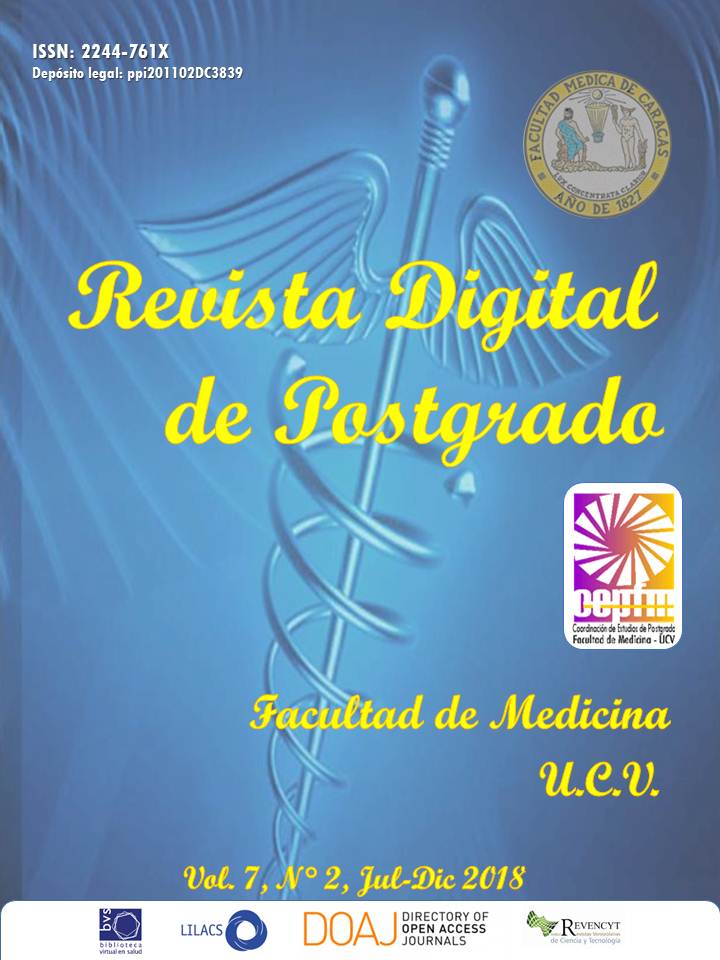Approach to a positive vision of health in the workplace through the sense of coherence
Keywords:
Sense of coherence, Work, Health.Abstract
The salutogenic theory has multiple applications, as fields of action has the human being in the different environments in which lives and develops, one of these fields of action is the work. The development of health in general, as well as within the workplace in particular, is a complex phenomenon that could be explored the salutogenic perspective. In contrast risk factors and disease are the center of attention from a pathogenetic perspective. This article aims to conduct a brief theoretical recount on some of the concepts developed by the salutogenesis theory and specifically of the concept of sense of coherence and its implications in the contribution to spaces of work focused on the positive health as one of the strategies for the promotion of the health in the work environment. This review is mainly based on Chapter 20 about the salutogenesis applications in the work published in the Handbook on Salutogenesis (1) in which the editors performed a review and update of the different fields of application.
Downloads
References
Gregor JJ, Bauer GF, Forbech Vinje H, Vogt K, Torp S. The Application of Salutogenesis to Work. In: Maurice M, Shifra S, Monica E. Georg B, Jürgen P, Bengt L, et al. The Handbook of Salutogenesis. [Internet] 2017 197-210 Springer International Publishing AG Switzerland.[Citado: 2018 abril 16]; Disponible en: https://www.wur.nl/upload_mm/9/7/a/55997ff3-f396-41e8-9cc2-bb1ce40dbb97_The%20Handbook%20of%20Salutogenesis.pdf
Antonovsky A. The salutogenic model as a theory to guide health promotion. Health Prom Int [Internet]. 1996 [Citado: 2018 febrero 08]; 11(1): 11-18. Disponible en: https://academic.oup.com/heapro/article/11/1/11/582748
Hernan M, Morgan A, Mena AL. Formación en salutogénesis y activos para la salud.España: Escuela Andaluza de Salud Pública [Internet]. 2010 [Citado: 2018 febrero 08]; Disponible en: https://www.easp.es/?wpdmact=process&did=Mi5ob3RsaW5r
Lindstrom B, Eriksson M. Salutogenesis. J Epidemiol Community Health [Internet] 2005 [Citado: 2018 marzo11]; 59(6):440-442. Disponible en: http://jech.bmj.com/content/59/6/440
Lindstrom B, Erksson M. Contextualizing salutogenesis and Antonovsky in public health development. Health Prom Int [Internet] 2006 [Citado: 2018 marzo18]; 21(3): 238-244. Disponible en: https://academic.oup.com/heapro/article/21/3/238/559289
Bauer G, Davies JK, Pelikan J. The EUHPID Health Development Model for the classification of public health indicators, Health Prom Int[Internet] 2006 [Citado: 2018 marzo18]; 21(2): 153-159 Disponible en: https://pdfs.semanticscholar.org/fe44/5988b9ff67be76edefad2f6fb25bbeb3d036.pdf
Word Health Organization. Workers’ health: Global plan of action. [Internet]. Geneva: WHO, 2007 [Citado: 2018 marzo 18]. Disponible en: http://www.who.int/entity/occupational_health/WHO_health_assembly_en_web.pdf
Antonovsky A. Health promoting factors at work: the sense of coherence. In CL Cooper, R Kalimo, & M El-Batawi, editors. Psychosocial factors at work and their relation to health. Geneva: WHO. 1987.
Adkins, J. A. Promoting organizational health: The evolving practice of occupational health psychology. Professional Psychology: Research and Practice [Internet] 1999 [Citado: 2018 marzo 18]; 30(2): 129–137. Disponible en: http://psycnet.apa.org/buy/1999-10876-004
Vogt K, Jenny GJ, & Bauer GF. Comprehensibility, manageability and meaningfulness at work: Construct validity of a scale measuring work-related sense of coherence. SA Journal of Industrial Psychology/SA Tydskrif vir Bedryfsielkunde [Internet] 2013 [Citado: 2018 marzo 18]; 39(1): 111-129. Disponible en: https://sajip.co.za/index.php/sajip/article/view/1111/1366
Kenny D. Occupational stress: reflections on theory and practice. In Kenny D, Carlson JG, McGuigan FJ, Sheppard JL. editors. Stress and health: Research and clinical applications Ámsterdam: Gordon Breach/Harwood Academia Publishers [Internet] 2000. [Citado: 2018 marzo 18]; Disponible en: https://www.researchgate.net/publication/223994998_Occupational_stress_Reflections_on_theory_and_practice
Karasek R, Theorell T. Healthy work. Stress, productivity and the reconstruction of working life. New York: Basic Books; 1990.
Johnson J, Hall E, Ford E. The psychosocial work enviroement of psysicians.The impact of demands and resources on job dissatisfaction and psychiatric distress in a longitudinal study of Johns Hopkins Medical School graduates.J Occup Environ Med[Internet] 1995.[Citado: 2018 marzo 18];37(9): 1151-1158 Disponible en:https://www.ncbi.nlm.nih.gov/pubmed/8528725
Román J. Estrés laboral y salud [Disertación] Instituto Nacional de Salud de Los Trabajadores de La Habana: Cuba, 1998.
Schaufeli WB, TarisTW. A critical review of the Job Demands- resources Model: Implications for improving work and health. In G. F. Bauer & O. Hammig editors, Bridging occupational, organizational and public health [Internet] 2014: 43–68. Dordrecht: Springer. [Citado: 2018 marzo 18]; Disponible en: www.wilmarschaufeli.nl/publications/Schaufeli/411.pdf
Moreno -Jimenez B, Baez C. Factores y riesgos piscososciales, formas, consecuencias, medidas y buenas prácticas [Internet] 2010Madrid: Instituto Nacional de Higiene y Salud en el Trabajo [Citado: 2018 marzo 26]; Disponible en: http://www.insht.es/InshtWeb/Contenidos/Documentacion/PUBLICACIONES%20PROFESIONALES/factores%20riesgos%20psico.pdf
Hallberg UE, Schaufeli WB. “Same” but different: Can work engagement be discriminated from job involvement and organizational commitment? European Psychologists [Internet] 2006 [Citado: 2018 marzo 26]; 11(2): 119–127. Disponible en: http://www.diva-portal.org/smash/record.jsf?pid=diva2%3A198683&dswid=-4271
Brauchli R, Gregor JJ, Füllemann D, Bauer GF. Towards a job demands-resources health model: Empirical testing with generalizable indicators of job demands, job resources, and comprehensive health outcomes. BioMed Research International [Internet] 2015 [Citado: 2018 marzo 26]; Disponible en: https://www.hindawi.com/journals/bmri/2015/959621/
European Network for Workplace Health Promotion. The Luxembourg declaration on workplace health promotion in the European union. [Internet] Luxembourg: 2005. [Citado: 2018 abril 16]; Disponible en: http://www.enwhp.org/fileadmin/downloads/free/Luxembourg_Declaration_June2005_final.pdf
Downloads
How to Cite
Issue
Section
License
Usted es libre de:
- Compartir — copiar y redistribuir el material en cualquier medio o formato
- Adaptar — remezclar, transformar y construir a partir del material
- para cualquier propósito, incluso comercialmente.
Bajo los siguientes términos:
-
Atribución — Usted debe dar crédito de manera adecuada, brindar un enlace a la licencia, e indicar si se han realizado cambios. Puede hacerlo en cualquier forma razonable, pero no de forma tal que sugiera que usted o su uso tienen el apoyo de la licenciante.
- No hay restricciones adicionales — No puede aplicar términos legales ni medidas tecnológicas que restrinjan legalmente a otras a hacer cualquier uso permitido por la licencia.











